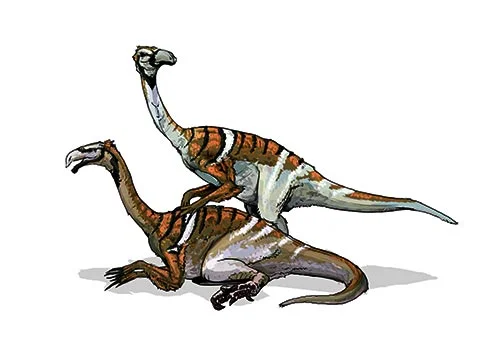Nanshiungosaurus (Nanshiung lizard)

Nan-she-ung-o-sore-us
Z. Dong - 1979
Herbivore/Possibly Omnivore
Estimated 4 meters long
Large Theropod
N. brevispinus (type)
China - Chijinbao Formation, Nanxiong Formation, Yuanpu Formation
Late Cretaceous, 85 million years ago
Nanshiungosaurus Facts
Nanshiungosaurus was a genus of herbivorous dinosaur that lived during the Late Cretaceous period, approximately 85 million years ago. Its fossils were first discovered in the Nanshiung Formation of China, from which it derives its name.
The Nanshiung lizard was a relatively small dinosaur, measuring around 4 meters (13 feet) in length and weighing about 400 kg (880 lbs). It had a long, narrow skull with a beak-like mouth and rows of small teeth, which it likely used to strip leaves and other vegetation from trees and bushes.
One of the most distinctive features of Nanshiungosaurus was the large, sail-like structure on its back, similar to that of other dinosaurs in the Spinosauridae family. This sail was likely used for display or thermoregulation, as it would have allowed the dinosaur to absorb or release heat more easily depending on the surrounding temperature.
Nanshiungosaurus is known from several fossil specimens, including partial skeletons and individual bones. These fossils have provided valuable information about the anatomy and behavior of this dinosaur, as well as its evolutionary relationships with other herbivorous and carnivorous dinosaurs from the Late Cretaceous.
In conclusion, Nanshiungosaurus was a fascinating dinosaur that lived during the Late Cretaceous period in what is now China. With its distinctive sail-like structure and beak-like mouth, it would have been a unique and interesting sight to behold. Its fossils serve as a reminder of the diversity of life that existed on Earth millions of years ago, and the important role that paleontology plays in uncovering and understanding this history.



